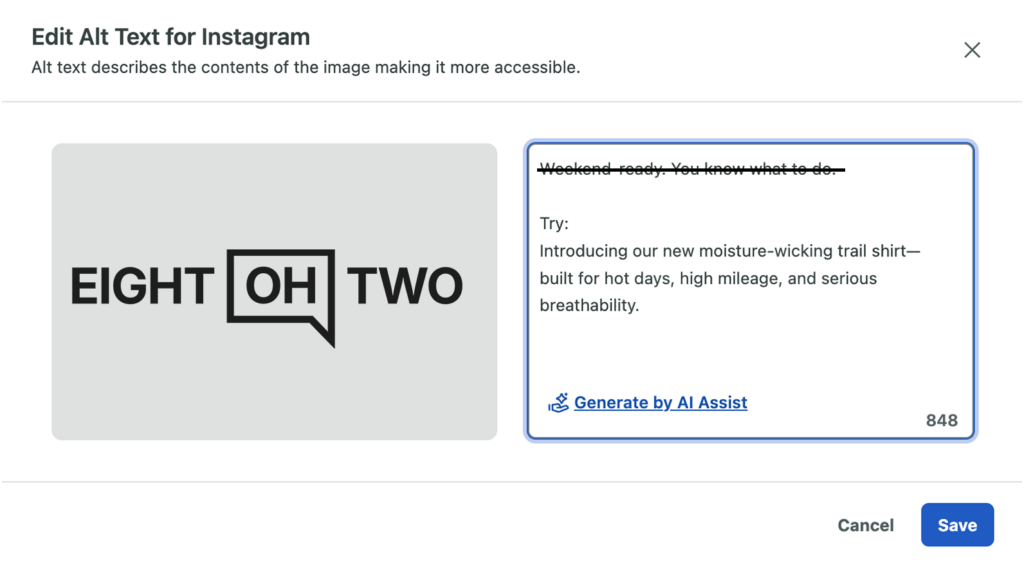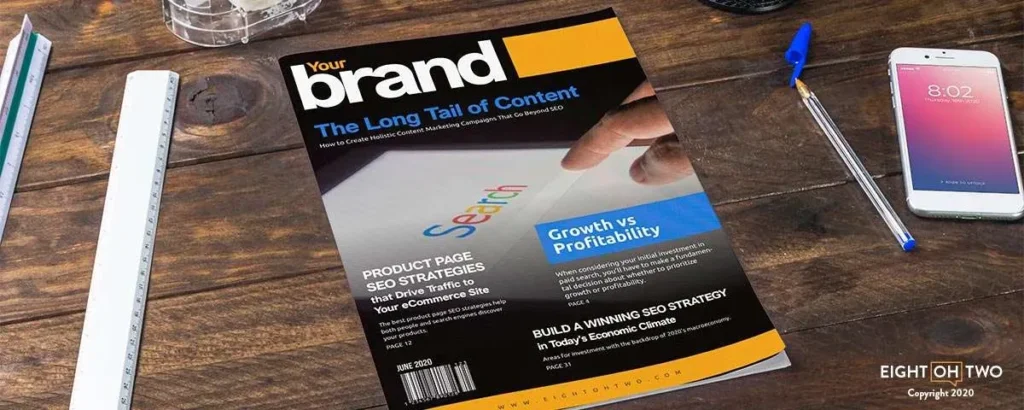Google indexing Instagram content isn’t just another SEO best practices update to file away—it’s a monumental shift in how brands show up in search. Starting July 10, 2025, all public content from professional Instagram accounts becomes eligible to appear in Google’s search results by default. That means your brand’s reels, carousels, static posts, and even captions can drive visibility beyond the feed.

If you’re already investing in thoughtful Instagram content, congrats! You should soon see your content in the SERPs, but don’t be overconfident in the quality of your optimized content. If your grid’s been mostly vibes and not much value, now’s the time to level up.
We’re a search-first agency, but we’re not here to pretend we’re social experts. So we looped in the pros at our sister agency, Joybyte, to get their take. As Joybyte Director of Social Strategy, Myriah Castillo, put it, “This update blurs the line between search and social. You’ve got to treat Instagram like a discovery engine, not just a branding tool. Posts will need to both perform and be optimized for search. Our interagency Slack between Joybyte and Eight Oh Two is going to be on fire.”
So, according to experts in SEO and social media, what can you do right now to improve the odds of your Instagram content appearing in Google SERPs? We pulled together seven areas brands should focus on to maximize this moment.
1. Write Captions for Humans and Search Engines
Instagram content is now searchable by Google. That means the same SEO principles that help your blogs rank should apply to your social posts.
Use keyword-rich captions, optimize your bio and handle with relevant terms, and think about how someone might search for content like yours. According to Castillo, “Keywords aren’t just for websites. Your captions and alt text need to pull their weight now.”
Let’s say your brand just dropped a new moisture-wicking trail shirt.
Rather than:
“Weekend-ready. You know what to do.”
Try:
“Introducing our new moisture-wicking trail shirt—built for hot days, high mileage, and serious breathability.”

It still reads naturally, but includes searchable, relevant terms. No keyword stuffing. No robotic tone.
2. Refresh Your Content With Search in Mind
Have older posts that still represent your brand well? Update the captions. Add alt text. Reuse winning content formats with stronger keywords.
Instagram doesn’t reward recency the same way TikTok does, so a great post from a few months back can still gain new life when optimized for search.
3. Add Alt Text Always
Yes, even on Instagram. Alt text isn’t just about accessibility (though that’s reason enough to use it). It also gives both Instagram and Google more context about your visuals.
And no, the default auto-generated alt text isn’t cutting it. Add descriptive, keyword-rich copy that tells search engines exactly what’s going on in the image.
Joybyte’s Lead Strategist, Haley Rojas, suggests, “Alt text isn’t often on the minds of social media managers. But if you haven’t been maintaining your alt text, or haven’t been optimizing it, now’s the time to add clear, relevant copy.”
4. Treat Reels Like Mini Landing Pages
Reels aren’t just for algorithmic reach; they’re now part of your searchable content library. Optimize them like you would any other digital asset.
Give them clear titles (not just trend sounds), on-screen text that reinforces the topic, and SEO-friendly captions. Think of each reel as a high-intent moment of discovery.
5. Don’t Sleep on Internal Linking
Internal linking isn’t just for your website. You can and should link Instagram content in your blogs, emails, and even your site nav. By creating bridges between your search-friendly content and your social content, you increase the chances of Google connecting the dots.
“This is where SEO and social teams need to play in the same sandbox,” says Rojas. “Cross-linking content isn’t just good strategy—it’s how you build topical authority in both spaces.”
6. Audit Your Grid Through a Search Lens
Not every post needs to rank in Google, but every public-facing post should have a purpose. Go back through your grid and look at it through a search-first lens.
Are your top posts aligned with searchable topics? Do they include keywords in the caption or alt text? Is the visual compelling on its own if pulled into a SERP? Run an audit, then rework or archive what’s not working.
7. Plan Content With SERP Intent
Some Instagram content is purely for engagement, and that’s okay. But as more of your feed becomes discoverable outside the platform, your content calendar should include posts that address search intent directly.
Ask:
- What questions do customers Google before they land on your site?
- What how-to content can we visually explain in a reel?
- What product terms are we targeting on our PDPs that we can also incorporate in Instagram captions?
According to Rojas, “We’re seeing the best-performing posts mirror what our SEO team normally recommends for blog content—clear value, shareable visuals, and intent-matching topics.”
Bottom Line: Social and Search Are No Longer Separate
Overnight, Instagram became part of your search strategy. This update changes the way we think about visibility and discoverability—and it’s a wake-up call for brands still treating SEO and social as siloed channels.
We’re big believers that your search and social teams shouldn’t be guessing what the other’s doing. That’s why we work hand-in-hand with Joybyte to align messaging, content strategy, and audience insights across platforms.
Because Instagram content that ranks in Google isn’t just “nice to have.” It’s a competitive edge.Need help getting your search and social in sync? We’d love to help. At Eight Oh Two, we turn brand content into compound growth—and we partner with the best to ensure every channel is pulling its weight. Let’s make your content do more.





